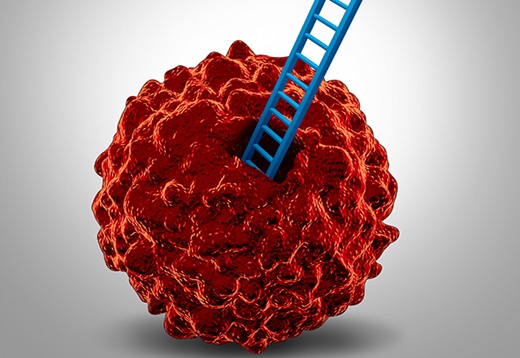Prostate Cancer Cells on the Move: But Why?
Prostate cancer cells that change shape, squeeze into organs and take root in other parts of the body. It may sound like science fiction — but in this case it’s pure science.

And while the cells’ shapeshifting behavior is unusual, it may offer new clues about why some prostate cancer spreads. Researchers want to understand how the shapeshifting influences prostate cancer cells to spread throughout the body in some patients, while in others the cancer remains in the prostate.
Johns Hopkins Kimmel Cancer Center scientists, who discovered the shape-changing process , say these cells may eventually suggest potential ways to intercept or reverse the ability of cancers to spread.
Shapeshifting and the Spread of Prostate Cancer
There is a protein called AIM1 that, along with other proteins, acts like scaffolding that keeps a prostate cell’s walls sturdy.
“AIM1, the scaffold, keeps normal cells in a rigid, orderly structure,” explains Srinivasan “Vasan” Yegnasubramanian, M.D., Ph.D. , a member of the research team and associate professor at the Johns Hopkins University School of Medicine.
The researchers recently discovered that AIM1 is not present in almost 40% of metastatic prostate cancer cells. “Without AIM1, cells become malleable, shapeshifting nomads that can migrate to other parts of the body, Yegnasubramanian says.
This shapeshifting sometimes allows prostate cancer cells to slip through layers of cells and tissues and slide into other organs. In fact, the scientists found that AIM1-lacking prostate cancer cells were capable of invading connective tissue-like materials at rates four times higher than cells with normal levels of AIM1.
There’s More to Learn
The scaffold protein AIM1, however, is not the whole story in the spread and growth of prostate cancer. In the study, AIM1-lacking cells did not establish full cancer cell colonies and tumors in the new locations. “…Something else may be helping them form full-blown metastatic tumors when they get there,” says Yegnasubramanian.
What’s Next?
Johns Hopkins scientists are planning more studies to find out why AIM1, the scaffold, isn’t present in some prostate cancer cells. They also hope to identify other proteins and genes that work with AIM1 to help cancer cells spread. Studies like this could help scientists find new drugs aimed at preventing or reversing the spread of prostate cancer throughout the body.





